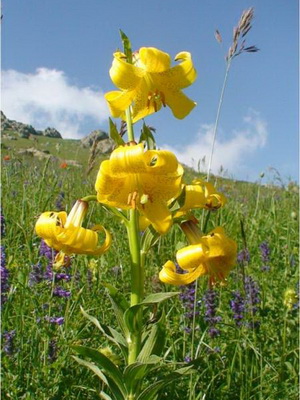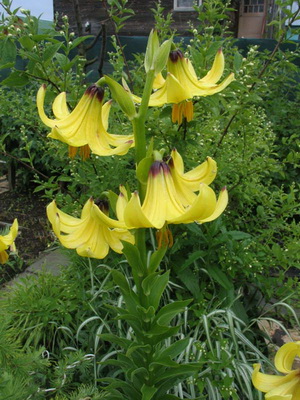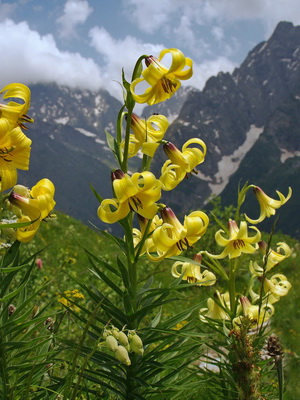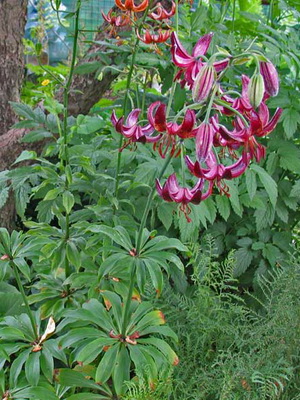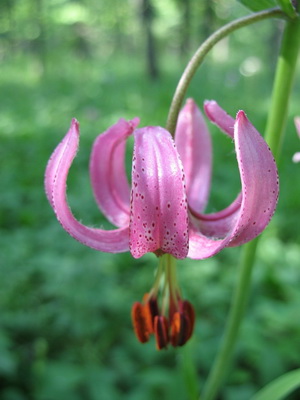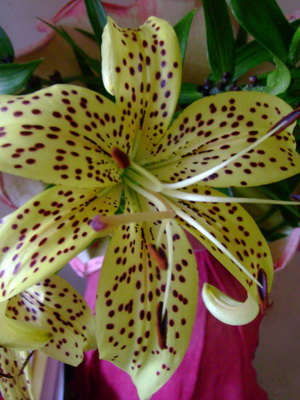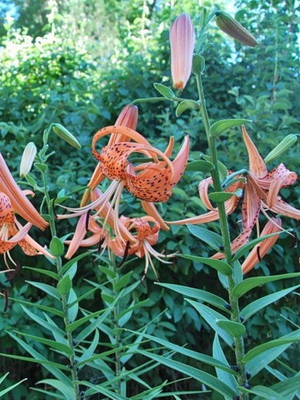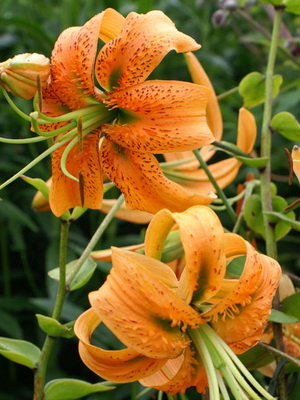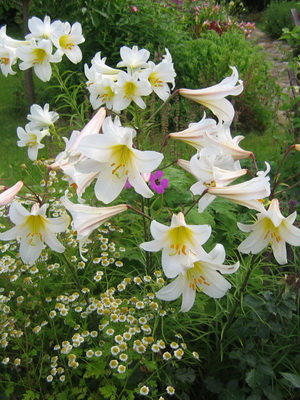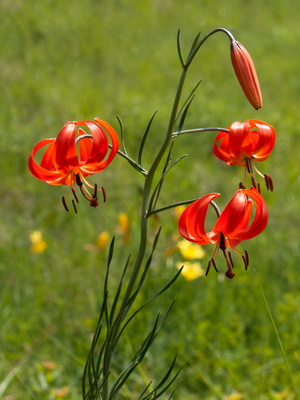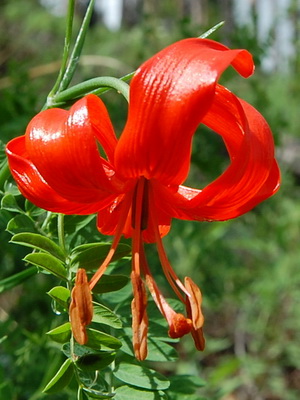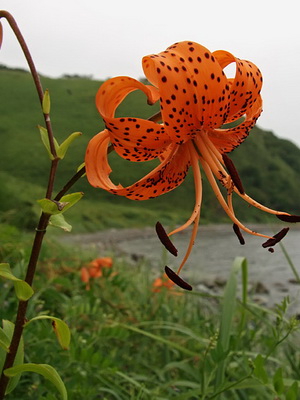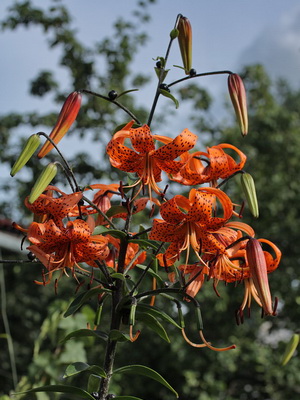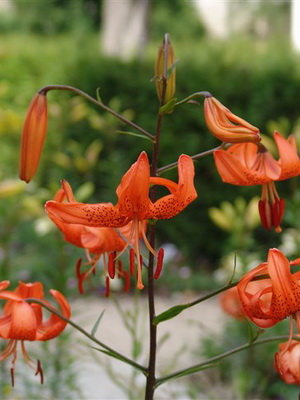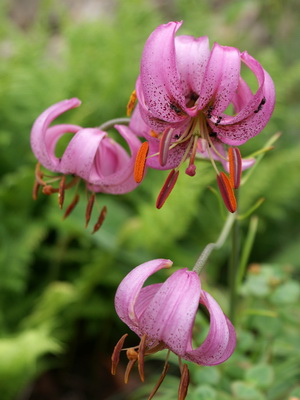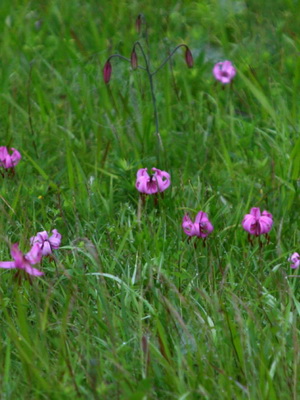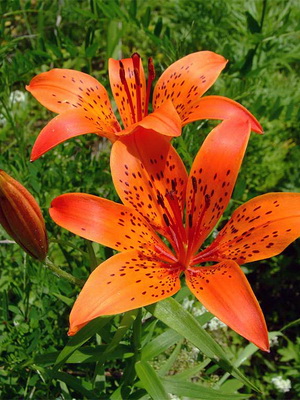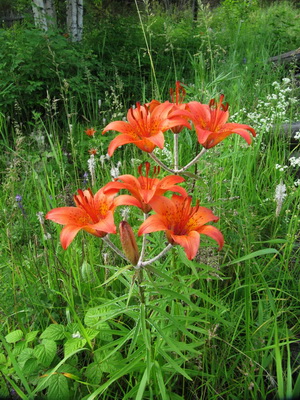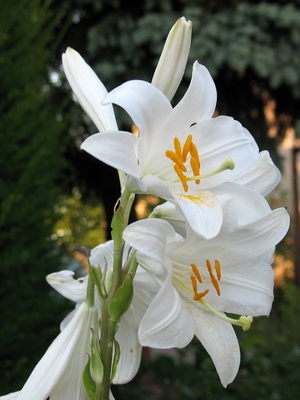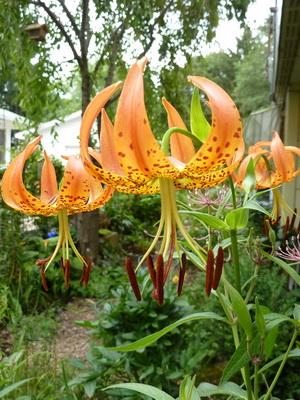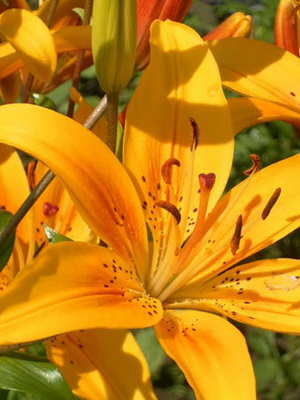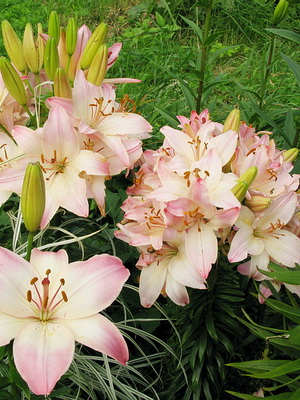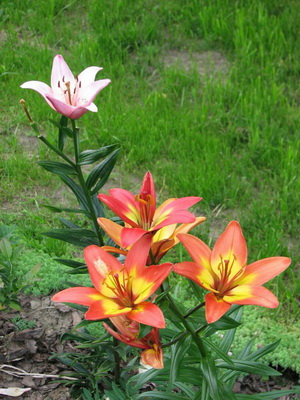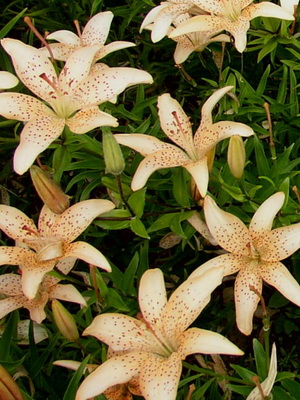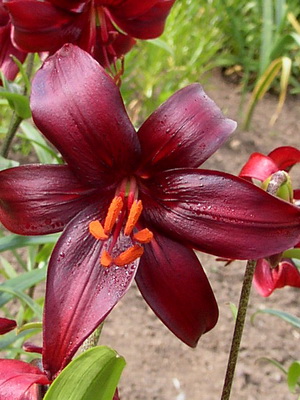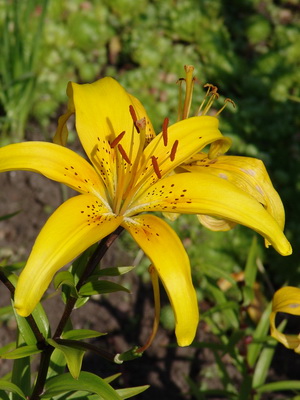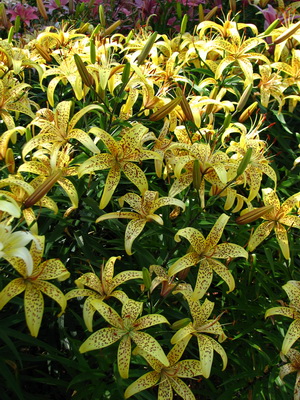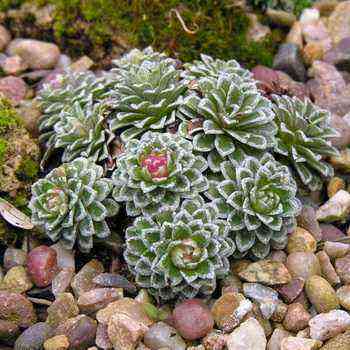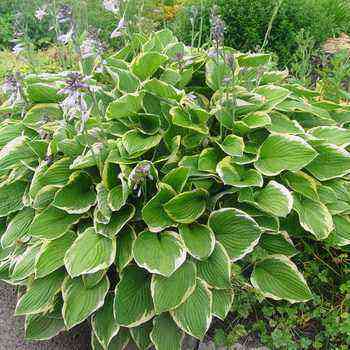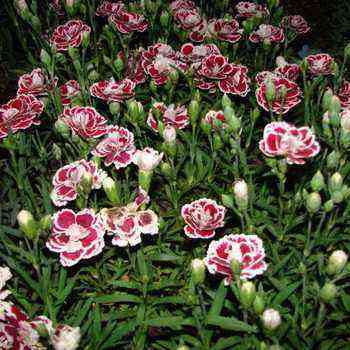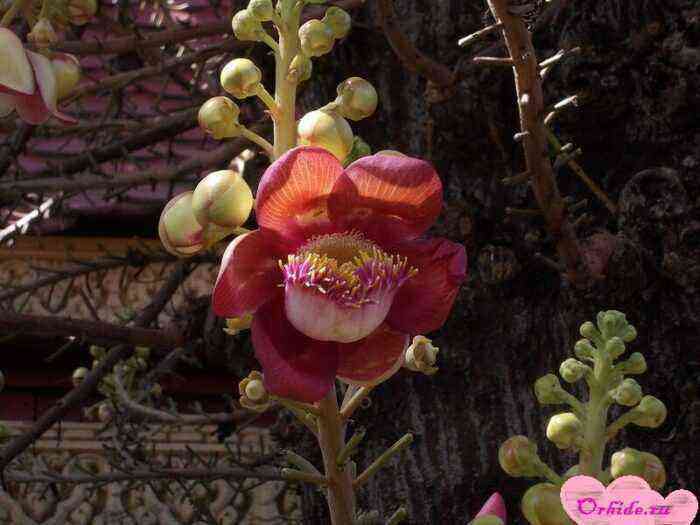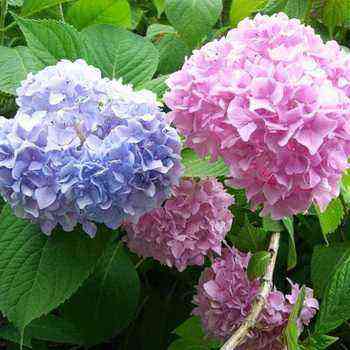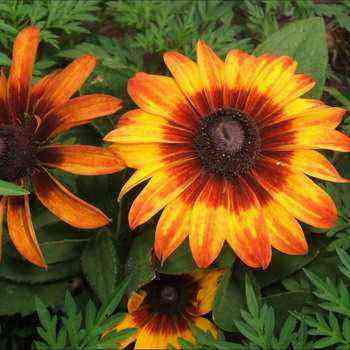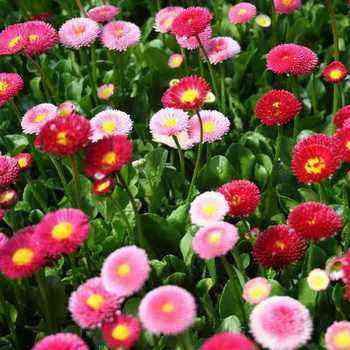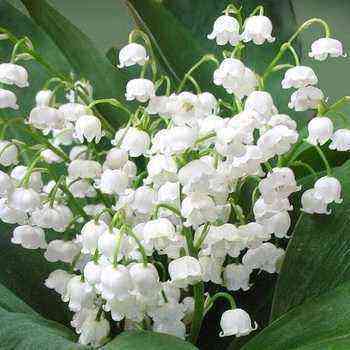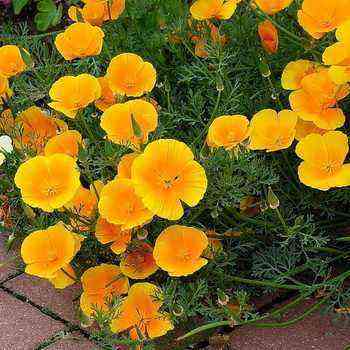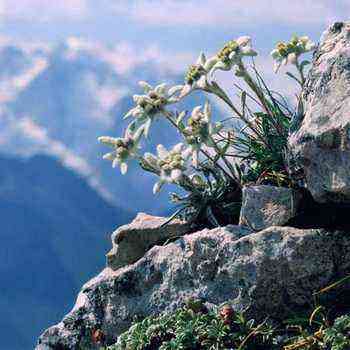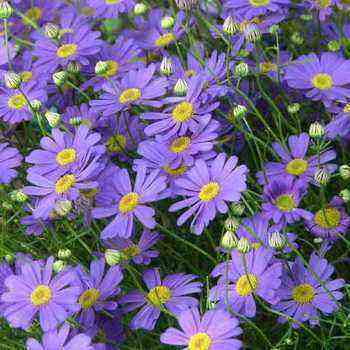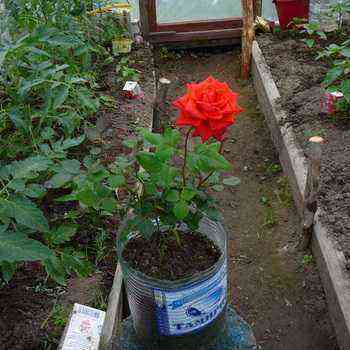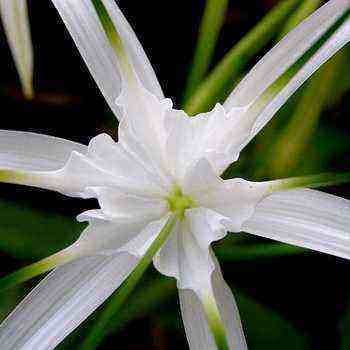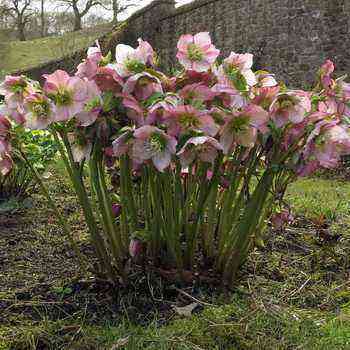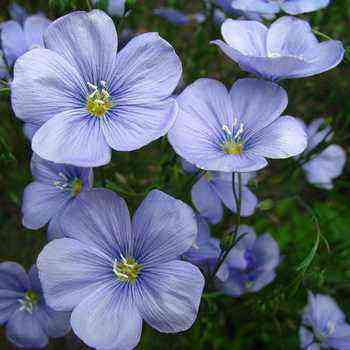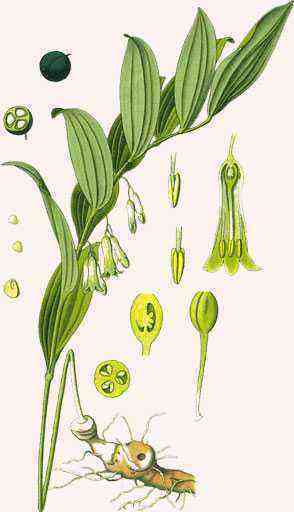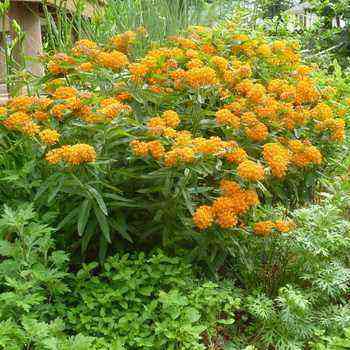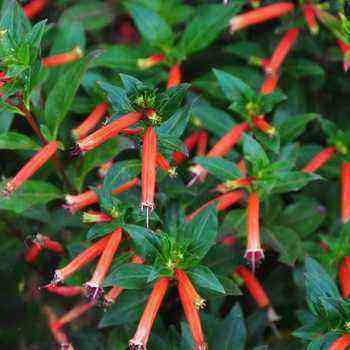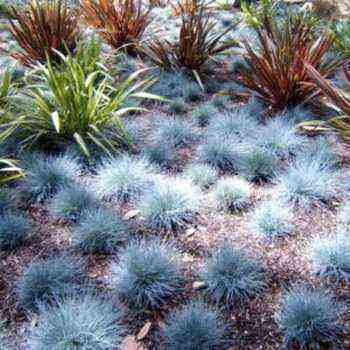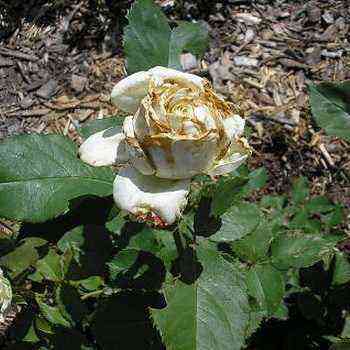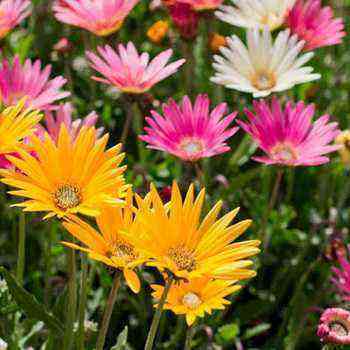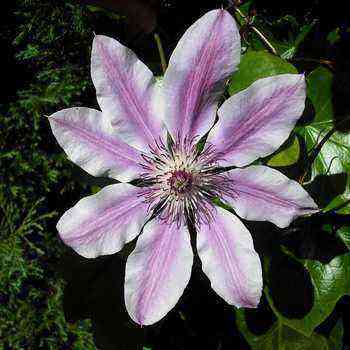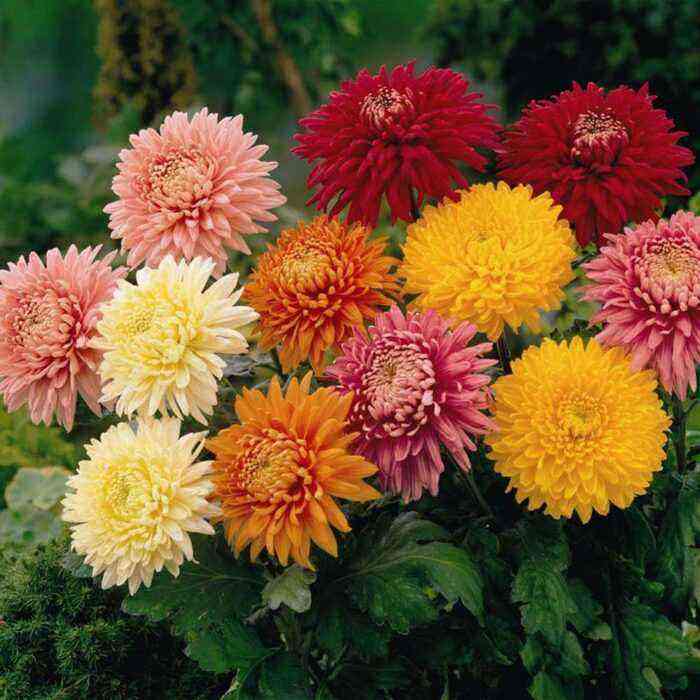
You can read the description of the varieties of lilies most adapted for growing outdoors in central Russia on this page.
Types and varieties of garden lilies
Lilies are one of the world’s most beloved flower cultures. Breeders have created about 5 thousand varieties of lilies, which are described in botanical reference books under the general name “hybrid lily”. It is a bulbous perennial. Peduncle erect, leafy, flowers of various shapes, often collected in inflorescences, fragrant.
About 100 species of lily flowers are known to grow in the temperate zone of Eurasia and North America, mainly in forest glades and subalpine meadows.
In central Russia, the most stable are:
Armenian lily (L. armenum).
Lily Kesselringa (L. kesselringianum) – 60-100 cm high, with straw-yellow tubular flowers.
Lilia curly (L. martagon) – 80-120 cm high, with turban-shaped lilac flowers.
Also popular is the leopard lily (L. pardalinum) – 60-120 cm high, turbid flowers, crimson-red. The description of the flowers of this lily fully
corresponds to its name – the petals are leopard-colored.
Lily Henry (L. henryi) – 100-180 cm high, turbid flowers, pinkish-yellow.
Royal lily (L. regale) – 80-120 cm high, tubular flowers, white.
Dwarf lily, or locust (L. pumilum) , – 20-60 cm high, turbid, reddish flowers.
Lanceolate lily (L. lancifolium) – 100 cm high, turbid flowers, brown-red with brown spots.
Pleasant lily (L. amabile) – 50-90 cm high, turbid flowers, bright orange, spotted.
Lily drooping (L. cernuum) – 40-70 cm high, turbid flowers, lilac, spotted.
Lily of Pennsylvania, or Daurian.
It is especially worth paying attention to the photo and description of the white lily (Lilium candidum) , which has been cultivated in the Mediterranean countries since antiquity, giving people not only beauty, but also fragrant oils. L. pensylvanicum = L. dahuricum – 20-80 cm high, cup-shaped flower, directed upward, orange-red, spotted.
Lily gorgeous (L. superbum) , 50-80 cm high, turbid flowers, golden yellow with brown spots.
Varietal lilies (L. x hollandicum) are especially popular with gardeners. It is customary to subdivide them into 8 groups of hybrids: Asian, curly, snow-white, American, long-flowered, tubular, oriental, mixed.
Pay attention to the photos of the species and varieties of Asian curly lilies and American hybrids – they are also often used for growing in Russian conditions.
Of particular interest are highly decorative varieties of Asian hybrids selected by M.F. Kireeva (Michurinsk). Photos of these types of garden lilies are presented below:
“Giselle”, “Cherry”
Volkhova, Aelita and etc.
Growing and reproduction of lilies
Growing conditions. Sunny and slightly shaded, well-drained areas with loose, nutritious neutral soil. They need constant moderate hydration. For the winter, it is advisable to cover with a leaf of broad-leaved species (oak, linden, maple) or spruce branches and mulch.
Breeding. Lilies are propagated mainly in September – by dividing the nest of bulbs, baby bulbs, bulbs (bulbs formed in the leaf axils). In spring, propagation by bulb scales is possible. Species lilies are propagated by seeds. Seeds are sown either in spring (seedlings in 30-90 days), or in autumn, freshly harvested (seedlings in spring).
Lilies are planted in flower beds of all types, most often in flower beds and in mixborders. Many varieties are grown as a cut crop and are used for forcing.
